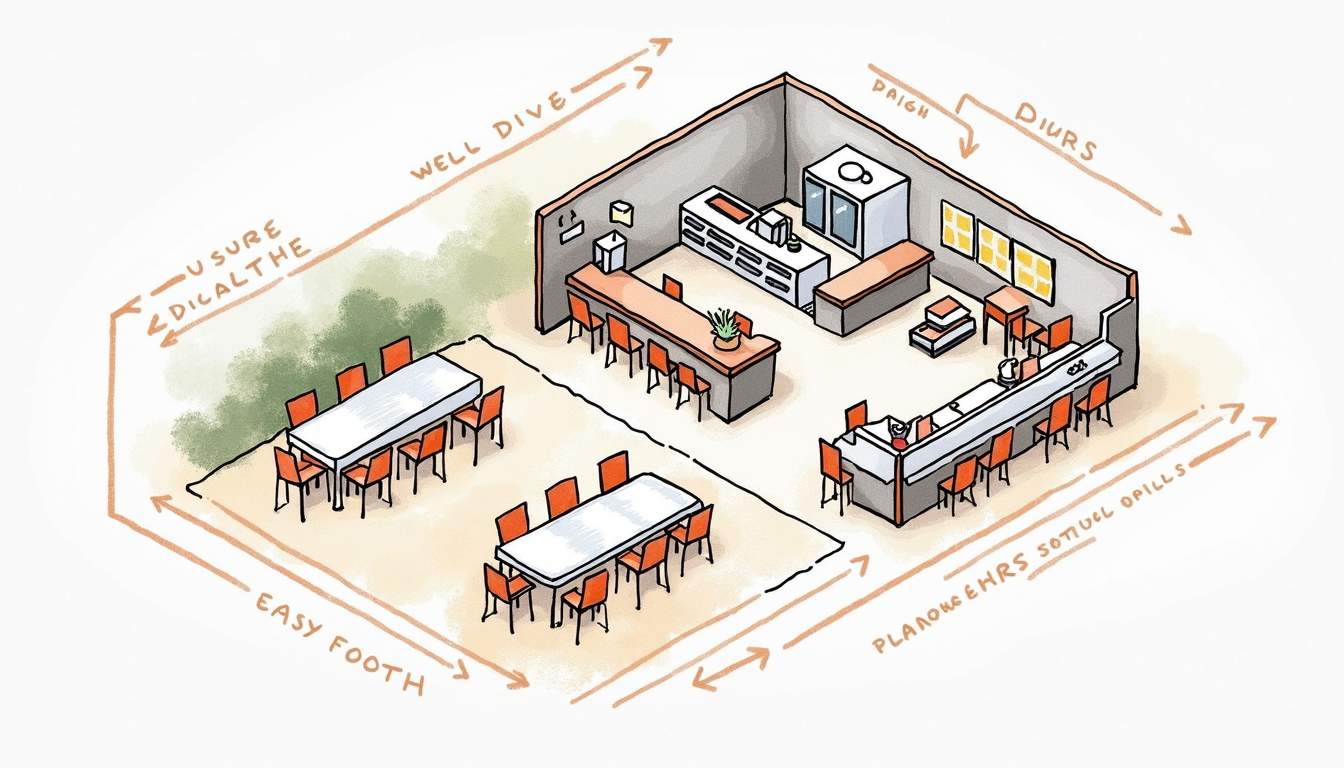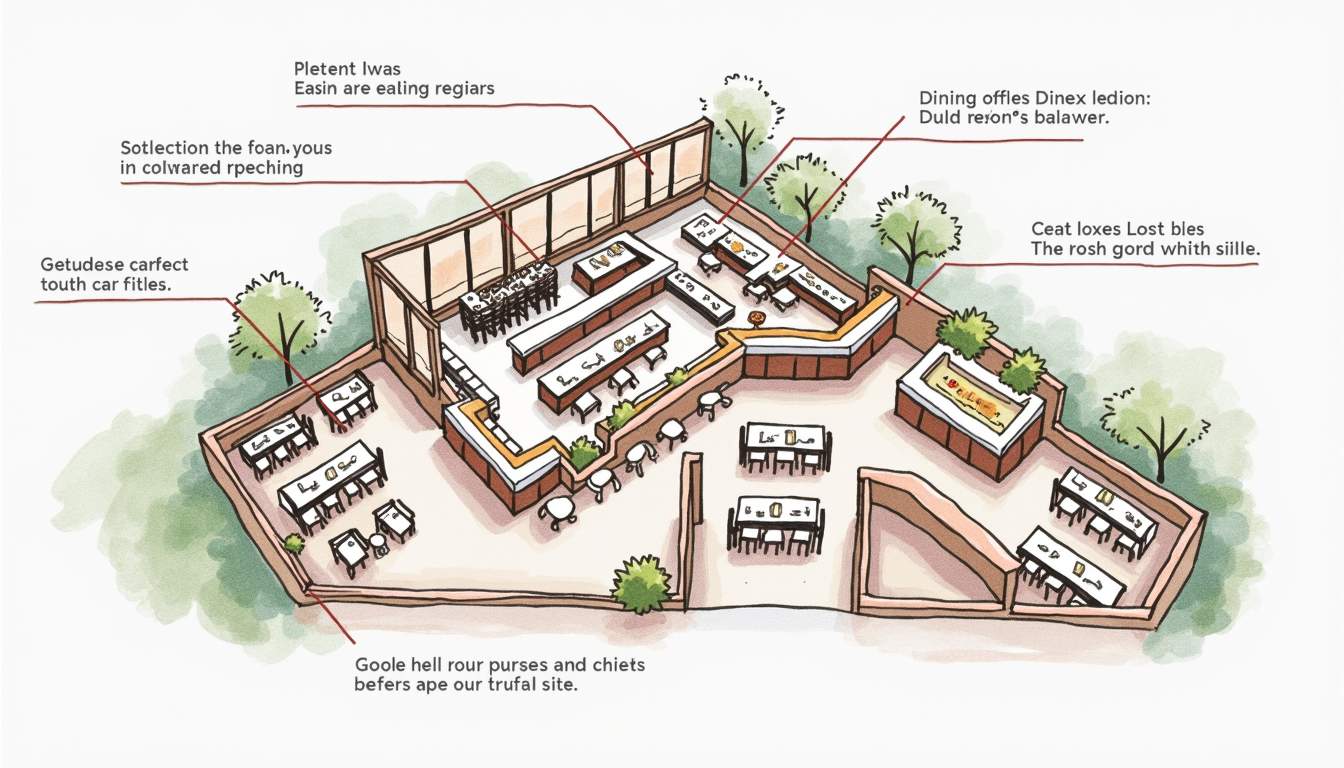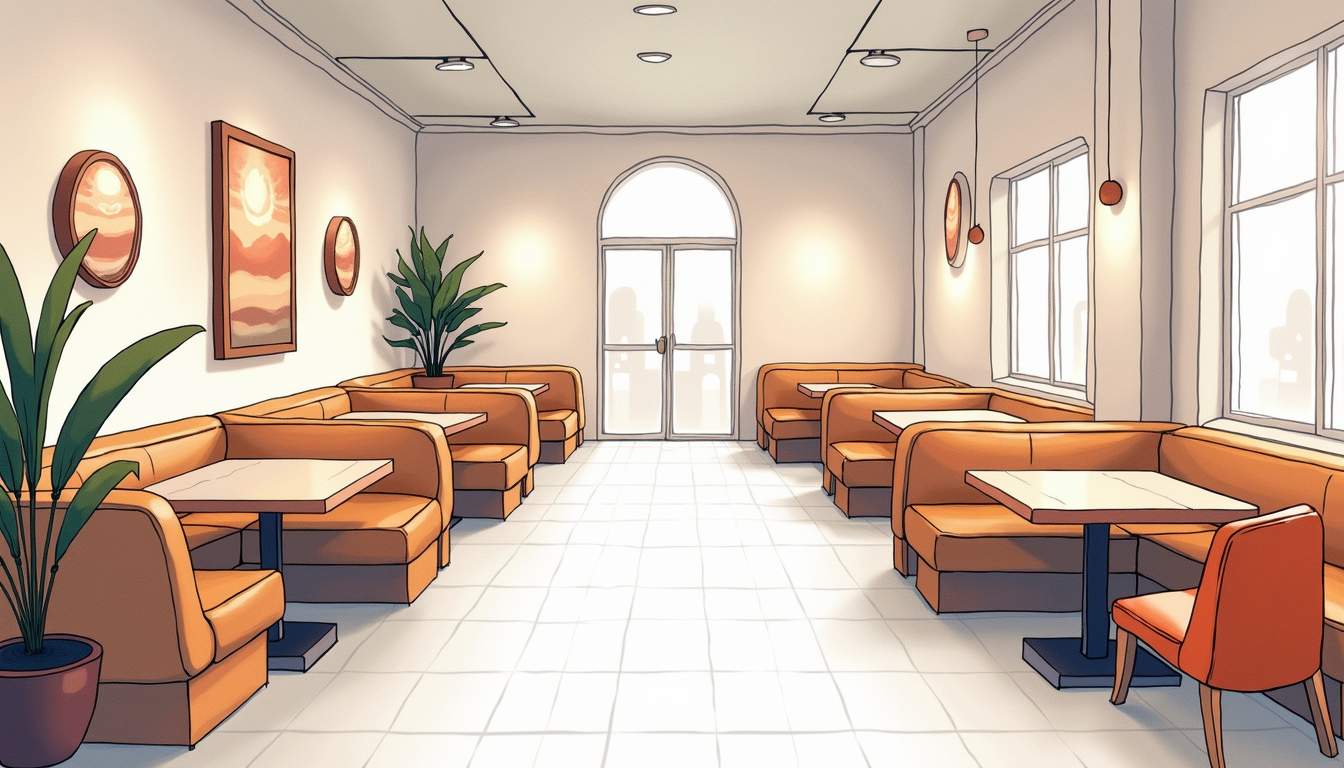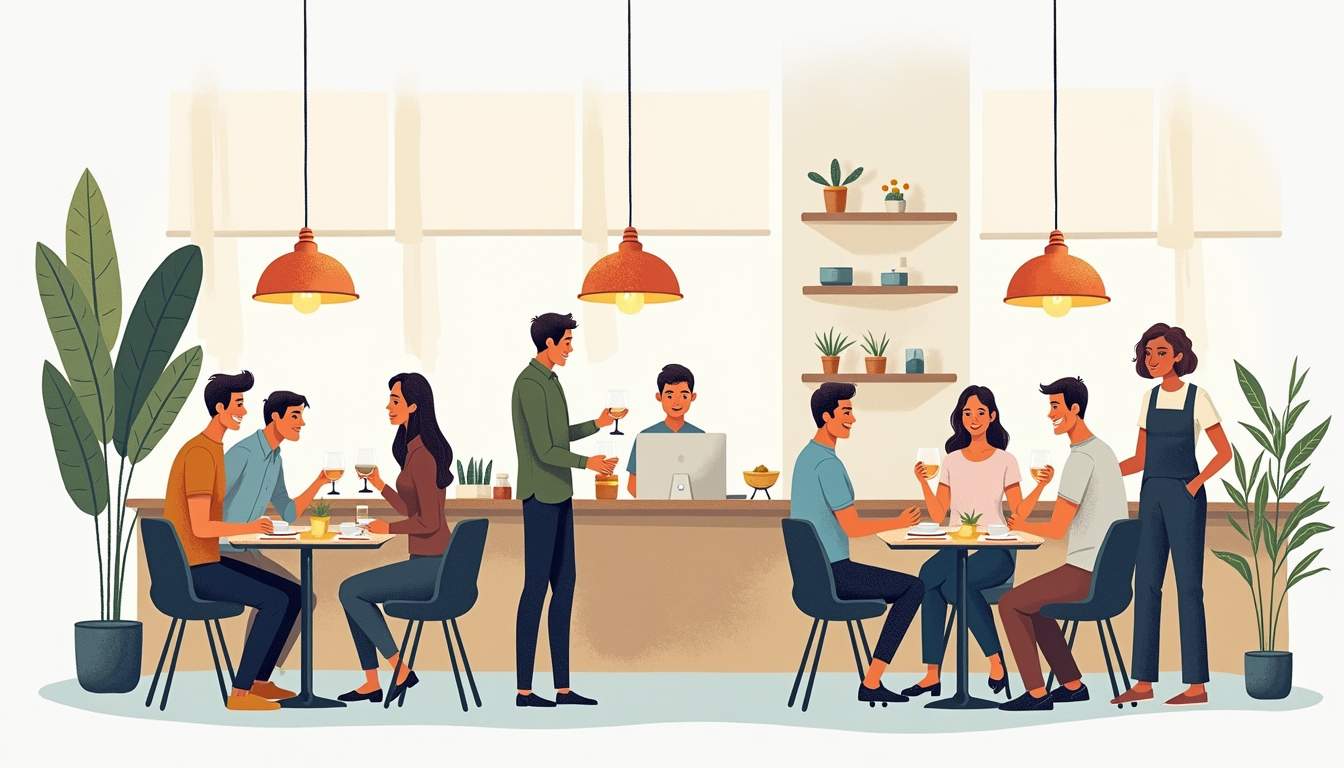
How to Optimize Your Restaurant Layout for Better Customer Experience
Creating a memorable dining experience goes beyond just serving delicious food. The layout of a restaurant plays a crucial role in shaping how customers perceive their visit. An optimized layout can enhance customer satisfaction, improve service efficiency, and ultimately boost revenue. This article explores various strategies to optimize your restaurant layout for a better customer experience.
The Importance of Restaurant Layout
The layout of a restaurant encompasses everything from the arrangement of tables and chairs to the design of the kitchen and service areas. A well-thought-out layout can lead to smoother operations and a more enjoyable experience for customers. When patrons feel comfortable and engaged, they are more likely to return and recommend the establishment to others.

First Impressions Matter
As soon as customers walk through the door, they form an impression based on the layout. An inviting entrance, clear pathways, and a visually appealing interior can set the tone for the entire dining experience. Consider how the entrance is positioned; it should be easily accessible and provide a glimpse of the ambiance inside.
Additionally, the arrangement of furniture should facilitate easy movement. Avoid overcrowding the space, as this can make customers feel cramped and uncomfortable. Instead, create a welcoming atmosphere that encourages patrons to explore and settle in. Thoughtful decor elements, such as artwork or plants, can enhance the visual appeal and contribute to a cohesive theme, making the restaurant not just a place to eat, but a destination to enjoy. For expert help in creating such inviting spaces, visit Shafbuild.
Flow and Functionality
Understanding the flow of both customers and staff is essential for optimizing restaurant layout. The layout should allow for smooth movement from the entrance to the seating area, and then to the restrooms and exit. Consider the paths that customers will take and ensure they are intuitive and unobstructed.
Staff efficiency is equally important. The kitchen should be strategically placed to minimize the distance between food preparation and serving areas. This not only speeds up service but also reduces the chances of mishaps during busy hours. Additionally, incorporating designated areas for staff to rest and regroup can help maintain morale and productivity, especially during peak dining times. The layout should also consider the placement of point-of-sale systems, ensuring that they are accessible yet unobtrusive, allowing for a seamless transaction process that enhances the overall dining experience.
Creating Comfortable Dining Zones
Different customers have different needs and preferences when it comes to dining. A well-designed restaurant layout should cater to a variety of dining experiences, from intimate dinners to large group gatherings. This diversity not only enhances customer satisfaction but also encourages repeat visits, as patrons feel that their specific dining needs are understood and met.
Flexible Seating Arrangements
Incorporating flexible seating arrangements allows for adaptability based on customer demand. For instance, movable tables and chairs can help accommodate both small parties and larger groups. This flexibility can also be beneficial during peak hours, enabling the restaurant to maximize its capacity without sacrificing comfort. Furthermore, the ability to reconfigure the space quickly can facilitate special events or private parties, offering a unique selling point for the establishment.
Consider offering a mix of seating options, such as booths, tables, and bar seating. Each type of seating can create a unique atmosphere and appeal to different customer segments. For example, booths can provide a sense of privacy, while bar seating can foster a more social environment. Additionally, incorporating outdoor seating options can enhance the dining experience during pleasant weather, allowing customers to enjoy their meals in a more relaxed, natural setting. This variety not only caters to different preferences but also encourages customers to explore various dining experiences within the same venue.
Designing for Privacy
While some customers enjoy the buzz of a lively restaurant, others may prefer a quieter, more intimate setting. Thoughtful layout design can help create pockets of privacy within the dining area. This can be achieved through strategic placement of partitions, plants, or even decorative screens. The use of varying heights in furniture and decor can also contribute to a sense of separation, allowing diners to feel more secluded without completely isolating them from the vibrant atmosphere of the restaurant.
In addition, consider the acoustics of the space. Soft furnishings, such as carpets and upholstered furniture, can help absorb sound, creating a more pleasant dining environment. A well-balanced ambiance can enhance the overall customer experience and encourage longer visits. Moreover, integrating elements like background music or subtle lighting can further enhance the mood, making it easier for diners to engage in conversation without raising their voices. By paying attention to these details, restaurants can create an inviting atmosphere that caters to both lively gatherings and intimate dinners, ensuring every guest feels at home.
Enhancing the Overall Atmosphere
The atmosphere of a restaurant is a combination of various elements, including lighting, decor, and layout. Each of these factors contributes to the overall experience and can significantly impact customer satisfaction.

Lighting Design
Lighting plays a crucial role in setting the mood of a restaurant. Bright, harsh lighting can create an uncomfortable atmosphere, while soft, warm lighting can promote relaxation and enjoyment. Consider using a combination of ambient, task, and accent lighting to create a layered effect that enhances the dining experience.
Adjustable lighting can also be beneficial, allowing the restaurant to change the ambiance based on the time of day or special events. For example, dimming the lights during dinner service can create a more intimate setting, while brighter lights during lunch can foster a more energetic atmosphere.
Decor and Branding
The decor of a restaurant should reflect its brand identity and create a cohesive theme. This includes everything from color schemes and artwork to furniture styles. A well-designed space can evoke emotions and create lasting memories for customers.
Incorporating local art or cultural elements can also enhance the dining experience, making customers feel more connected to the community. Additionally, consider using decor to guide customers through the space, creating focal points that draw attention and enhance the overall flow.
Utilizing Technology for Efficiency
In today’s digital age, technology can play a significant role in optimizing restaurant layout and enhancing customer experience. From online reservations to digital menus, leveraging technology can streamline operations and improve service quality.
Online Reservations and Waitlist Management
Implementing an online reservation system can help manage customer flow and reduce wait times. This allows customers to plan their visits and ensures that the restaurant can accommodate them effectively. Additionally, a digital waitlist can inform customers of their expected wait time, enhancing their overall experience.
By managing reservations and waitlists efficiently, restaurants can minimize overcrowding during peak hours and ensure that customers feel valued and attended to.
Tabletop Technology
Tabletop technology, such as tablets for ordering and payment, can enhance the dining experience by providing customers with more control over their meals. This technology allows patrons to browse the menu, customize their orders, and settle their bills at their convenience.
Moreover, these systems can provide valuable data on customer preferences and trends, enabling restaurant owners to make informed decisions about menu offerings and layout adjustments.
Incorporating Outdoor Spaces
Outdoor dining has become increasingly popular, especially in urban areas where space is limited. Incorporating outdoor seating can enhance the customer experience by providing a change of scenery and a more relaxed atmosphere.
Designing an Inviting Outdoor Area
When designing an outdoor space, consider factors such as comfort, shade, and ambiance. Comfortable seating, greenery, and decorative elements can create an inviting atmosphere that encourages customers to dine al fresco.
Additionally, ensure that the outdoor area is easily accessible from the main dining space. This seamless transition can enhance the overall flow of the restaurant and provide customers with more options for their dining experience.
Seasonal Adaptability
Outdoor spaces should be designed with seasonal adaptability in mind. This includes the ability to provide heating or cooling options, as well as flexible furniture arrangements that can be adjusted based on the season. For instance, during colder months, outdoor heaters or blankets can make the space more comfortable for diners.
By creating a versatile outdoor area, restaurants can maximize their seating capacity year-round and cater to a wider range of customer preferences.
Feedback and Continuous Improvement
Finally, optimizing a restaurant layout is an ongoing process that requires continuous feedback and adaptation. Gathering input from both customers and staff can provide valuable insights into how the layout can be improved.
Customer Surveys and Feedback Forms
Implementing customer surveys and feedback forms can help identify areas for improvement. Questions about seating comfort, accessibility, and overall experience can provide actionable insights that inform layout adjustments.
Encouraging customers to share their thoughts can also foster a sense of community and make them feel more invested in the restaurant’s success.
Staff Input and Observations
Staff members are on the front lines of service and can offer unique perspectives on the restaurant layout. Regularly soliciting their feedback can help identify bottlenecks or inefficiencies that may not be apparent from a customer standpoint.
Creating an open dialogue with staff can lead to collaborative solutions that enhance both the customer experience and operational efficiency.
Conclusion
Optimizing a restaurant layout is a multifaceted endeavor that requires careful consideration of various elements, from seating arrangements to technology integration. By prioritizing customer experience and continuously seeking feedback, restaurant owners can create a welcoming and efficient environment that encourages repeat visits and positive word-of-mouth.

Ultimately, a well-designed restaurant layout not only enhances the dining experience but also contributes to the overall success of the establishment. By investing time and resources into optimizing the layout, restaurants can set themselves apart in a competitive industry and create lasting memories for their customers.